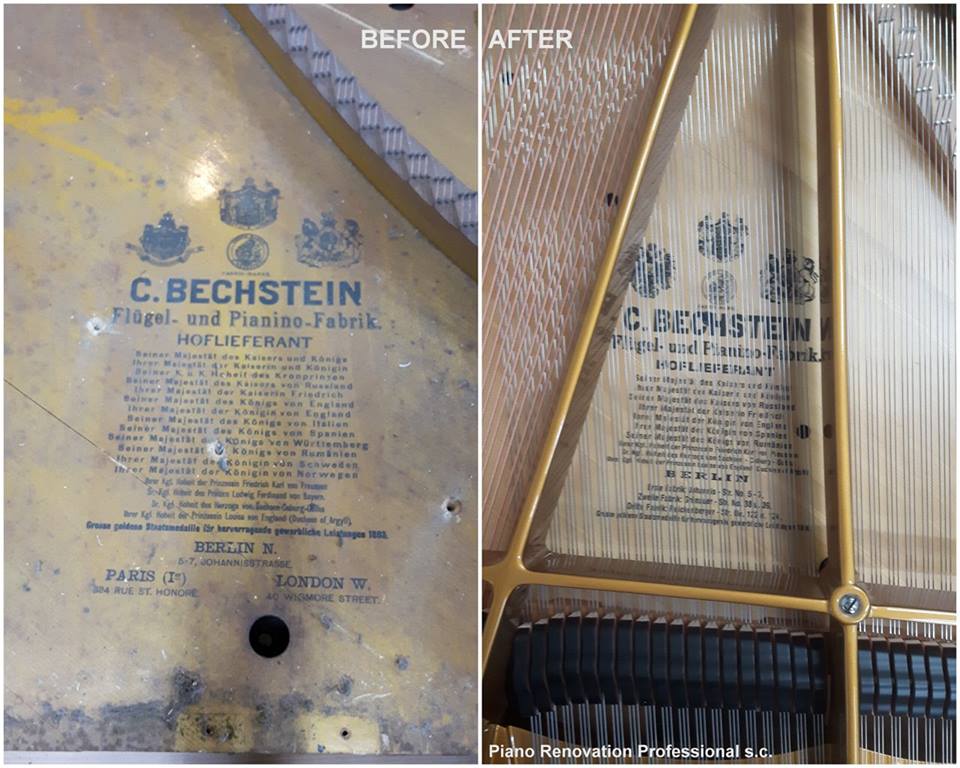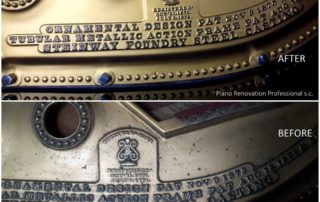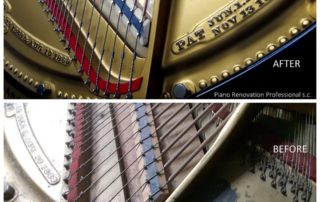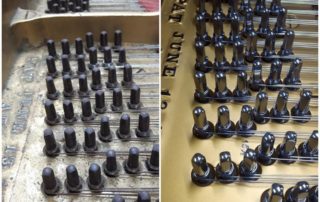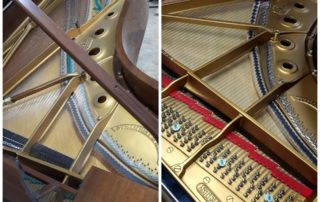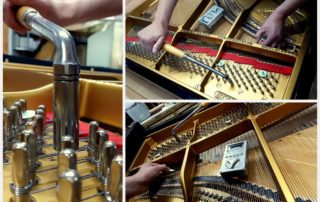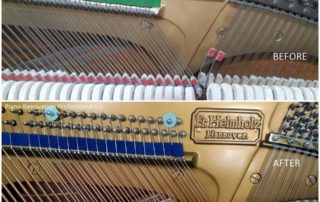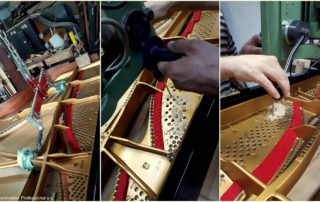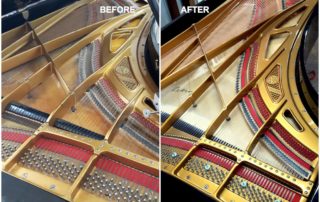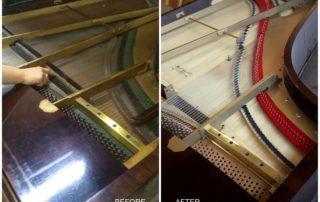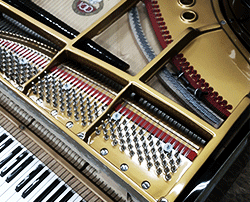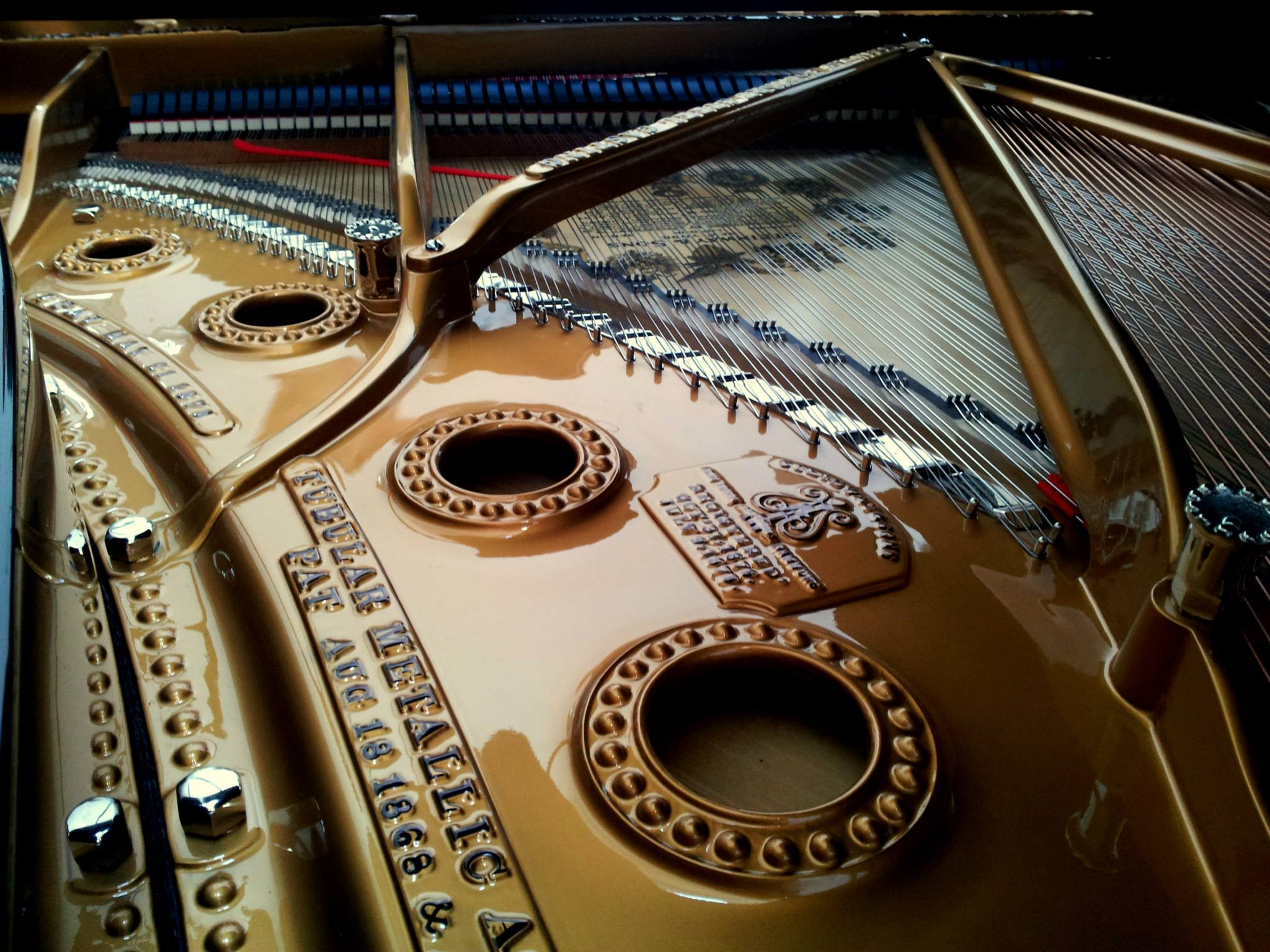
ACOUSTICS RESTORATION
detailed examination of an instrument and full professional opinion regarding it’s condition
individual price offer for instrument’s restoration and additional options
drying of the soundboard in an appropriate temperature, only if necessary;
gluing and reinforcement of instrument’s ribs if these are not stable
grinding, wood fulfillment and lacquering of the soundboard;
soundboard finish (mat or high polish lacquer);
choice of the perfect logo (soundboard decal) regarding instrument’s brand;
bridge pins cleaning;
bass and treble bridge restoration
polishing of steel elements etc. screws and hinges;
iron frame restoration and hand-lettering;
iron frame welding;
replacement of all the felt parts;
tuning pins replacements etc. Diamant, Klinke, Biene
strings replacement: Roslau, Paulello, Heller; Keleman;
pinblock replacement (if needed): Delignith, Bolduc oraz Pisz s.a.
tuning and voicing;
FRAME
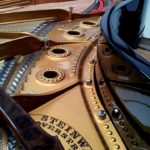
A cast iron frame, often called a plate, is the basic structure of the instrument. It is the cast iron frame that supports all the stresses resulting from the string tension.
In the distant past, the frame was made of wood, which bent in all directions under the enormous tension of the strings. In order to avoid the warping of the wood, specialists of those eras had to keep the strings at a lower tension, which nevertheless resulted in a more subtle sound. However, thanks to the rapid development of the metallurgical industry in the nineteenth century, the truest cast-iron frames began to be created, which allowed for more serious tensioning of the strings, which in turn led to the momentous sound of the modern instrument.
In our company, we carry out a very thorough inspection of the instrument, i.e. in particular the cast iron frame, which should be in perfect condition. Even the smallest cracks visible to the naked eye cannot be tolerated here. The cast iron frame, depending on its current condition, is subjected to a thorough cleaning process to check for any defects, welding, if it turns out that there are any on the frame, grinding and sandblasting to restore its beautiful streamlined shape and then varnish it. The color and shade of the varnish largely depend on the brand of the instrument or often the individual customer’s design.
PINBLOCK
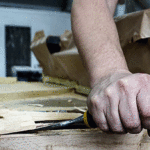
The pinblock, as one of the most important elements, although directly invisible in most instruments, is designed to maintain the so-called the tuning (melody) on the instrument. Unfortunately, a beautiful and new tuning box after a long use of the instrument, and we are talking about decades, sometimes becomes exploited. Over time, the holes left by the reed pins driven into the pin bars widen and do not hold the pins sufficiently for the instrument to be tuned, the wood warps, shrinks, bends or simply breaks and loses its ability to attach and hold the tuning to the instrument. In such cases, we are forced to replace the pincer. In our company, we use dies of various origins, such as Delignith, Bolduc or Pisz s.a.
Delignith is a German-made multi-layer plywood made of beech wood. Depending on the needs of the instrument, the tuning machine consists of several layers. Beech veneer prides itself on high quality, its layers are pressed together with hot modified phenolic resin. This type of dressing machine is used by professionals all over the world.
Bolduc is a Canadian origin square, also known as a ‘maple plate’, made of maple wood. The headstock is glued together in such a way that the layers are resistant to temperature changes and the occurrence of possible humidity, and yet they are not suitable for tuning the instrument. We only use Bolduc plywood to renovate Steinway & Sons instruments.
STRINGS
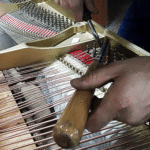
In order for the instrument to be as voiced as it can be 100% capable, we need to carefully measure the strings to perfectly match their new set. Manufacturers we have full confidence in in this field are: Paulello, Heller, Reslau, Kelemen or original Steinway strings used exclusively for the same brand of the piano.
PAULELLO
Stephen Paulello, a world-famous pianist, aimed to solve the technical and aesthetic problem of bass strings in keyboards. In 1996, he started working on strings in 1996, and the company has grown rapidly so far. At the moment, the strings are available in two versions: nickel-plated and polished.
HELLER
Gregor Heller started working on bass strings in 1985 and has consistently said that “Quality will always prevail.” To this day, Heller’s strings are characterized by extraordinary quality and the highest quality material. Heller is a registered trademark.
RESLAU
The Reslau company is a global supplier of strings for musical instruments
WELDING
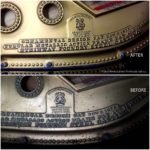
Spawanie ramy żeliwnej to nie lada zadanie. Akustyk, czyli osoba zajmująca się m.in. ramą żeliwną musi mieć świetne oko aby wychwycić najmniejsze pęknięcie w ramie, ponieważ w przeciwnym razie, niezauważenie tejże wady może przyczynić się do wielu dysfunkcji w instrumencie.
Jeśli chodzi o sam proces spawania instrumentu, w profesjonalnej firmie, nie można tego kojarzyć z ogromną ‘nadwarstwą żeliwa’ znajdującą się w miejscu pęknięcia na ramie. Skupiamy uwagę nie tylko na funkcjonalności instrumentu, ale również na jego estetyce. Stąd nasz klient może być pewny, iż po renowacji ramy nie będzie w stanie wskazać ponownie miejsca, w którym rama była spawana.
TUNNING PINS
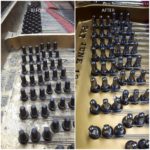
BRIDGES

SOUNDBOARD
